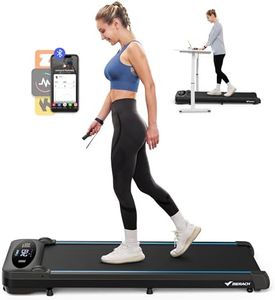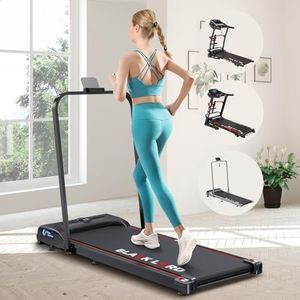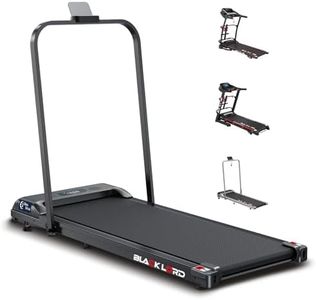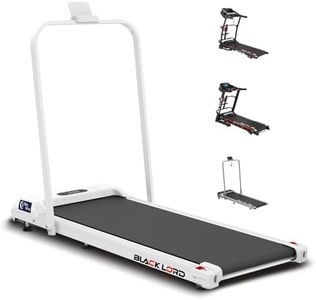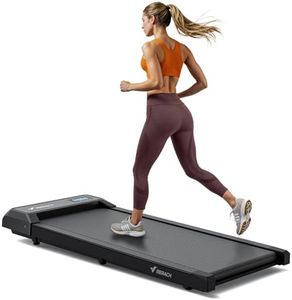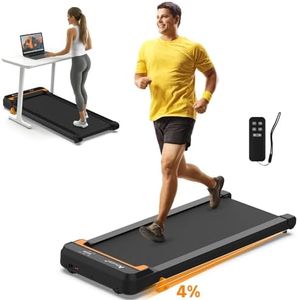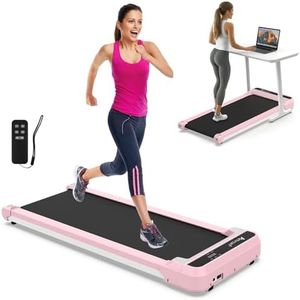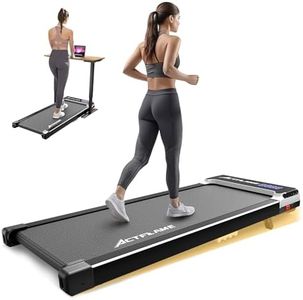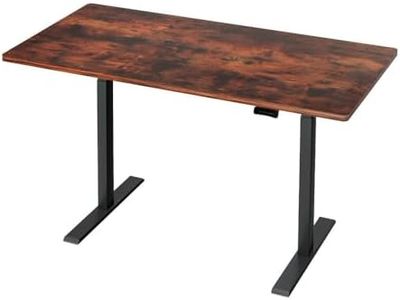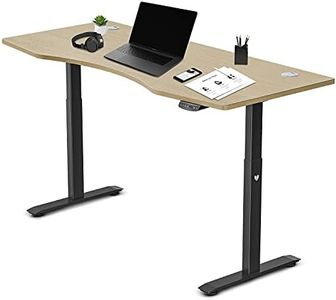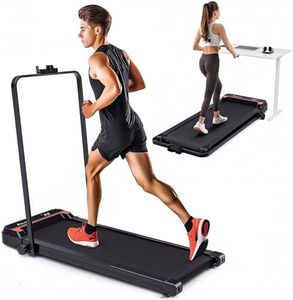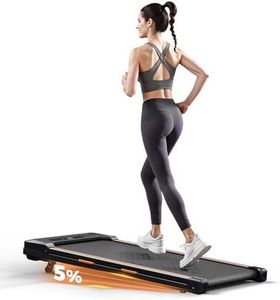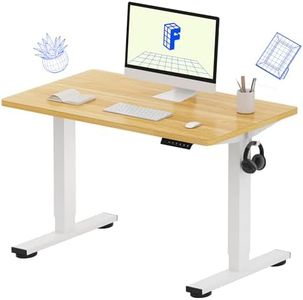We Use CookiesWe use cookies to enhance the security, performance,
functionality and for analytical and promotional activities. By continuing to browse this site you
are agreeing to our privacy policy
10 Best Walking Desk
From leading brands and best sellers available on the web.Buying Guide for the Best Walking Desk
Choosing a walking desk is all about finding a comfortable and practical way to stay active while working. Walking desks combine a treadmill with a desk or a desk attachment, letting you walk at a slow, steady pace while handling tasks at your computer or on the phone. When picking the best walking desk for your needs, focus on finding a balance between usability, space, comfort, and noise to ensure it supports your daily routine seamlessly. Understanding the essential features will help you find a desk that fits your workspace, activity level, and lifestyle.Desk Size and AdjustabilityDesk size and adjustability refer to the physical dimensions of the desk surface and how easily it can be raised or lowered. This is important because you want enough space for your computer, monitor, keyboard, and other work essentials, while also being able to adjust the desk to suit your height and improve comfort. Desk surfaces generally range from compact sizes suitable for laptops to larger versions that can handle monitors and documents. Some desks are fixed-height while others can be adjusted electronically or manually. You should consider how much equipment you'll need on your desk each day and whether you'll be sharing the desk with others of different heights. Adjustable desks are a better match if multiple people are using the space or if you want to alternate between standing, walking, and sitting.
Treadmill Speed RangeTreadmill speed range refers to how fast or slow the walking surface can move. This spec is important because it determines whether you can walk comfortably at a pace that matches your work habits. Most walking desks focus on low speeds, typically ranging from 0.4 mph to 4 mph. Lower speeds (0.4-2 mph) are ideal for focused work like typing or video calls, while higher speeds (2-4 mph) are better if you want more exercise during less intensive tasks like reading or talking on the phone. Think about what kind of work you'll be doing while using the walking desk—if it's mostly detailed work, a slower maximum speed will be just fine, but if you want the flexibility to walk faster, look for a treadmill with a higher top speed.
Noise LevelNoise level describes how loud the treadmill is when it's in use. This is especially important if you work in a shared space or need to make phone or video calls, as a noisy treadmill can be distracting. Noise levels are often measured in decibels (dB), but manufacturers may also provide subjective descriptions like 'ultra-quiet' or 'whisper-quiet.' For most office settings, a walking desk should operate quietly enough that it doesn’t interfere with conversations or concentration. If your work involves frequent calls or you’re sensitive to background noise, prioritize models designed with noise reduction features.
Weight CapacityWeight capacity indicates the maximum supported user weight for the treadmill or walking surface. It's important for both safety and longevity of the treadmill. Walking desks typically support weights ranging from 200 to 350 pounds or more. You should choose a model that accommodates your body weight comfortably and with some margin, especially if you plan on using the desk regularly or sharing it with others.
Footprint and PortabilityFootprint and portability refer to the amount of space the walking desk occupies and how easy it is to move or store. The footprint is especially important if you have a smaller office or shared workspace. Walking desks come in a range of sizes, and some units are designed to be slim and easy to roll away when not in use. If space is tight or you’ll need to move the desk often, consider lightweight or foldable models with wheels. On the other hand, if you have a dedicated area, a larger and more stable unit may be preferable.
Control and Display FeaturesControl and display features include how you adjust the treadmill’s speed, start or stop the unit, and monitor metrics like speed, time, distance, or steps. Some walking desks offer basic buttons and simple displays, while others provide advanced controls, Bluetooth connectivity, or even app integration. The right choice here depends on how much you want to track your activity. If you enjoy monitoring your exercise statistics or want to set reminders and goals, look for more advanced control panels. For basic usage, a straightforward manual control will be sufficient.
